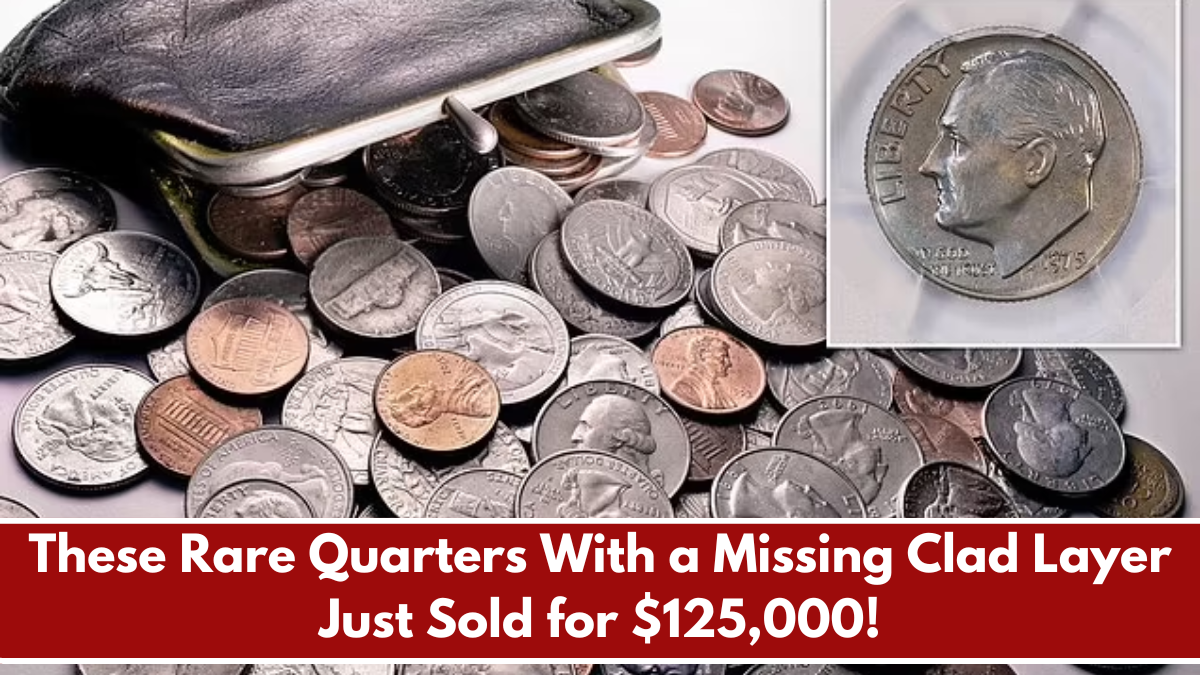Most people handle quarters daily without giving them a second thought. But what if one of those everyday coins was missing something crucial—like its outer layer? That’s exactly what happened with a few ultra-rare U.S. quarters known as “missing clad layer” errors. These coins were struck without their normal outer nickel coating, exposing the copper core and creating a unique look that makes collectors go wild. Recently, three of these rare error quarters collectively fetched an astounding $125,000 at auction.
1978 Washington Quarter (Missing Clad Layer on Obverse)
One of the most notable examples is a 1978 Washington Quarter that was missing its clad layer on the obverse (front) side of the coin. Instead of the usual silver-colored surface, the front appears coppery and dull, revealing the core beneath. This kind of error happens during the minting process when the nickel layer isn’t properly bonded. The coin sold for over $42,000, mainly due to its high grade and the clarity of the error.
1983-P Quarter (Full Missing Clad Layer)
A 1983-P quarter took the spotlight with both sides missing the clad layer, making it appear as a fully copper coin. The Philadelphia Mint struck billions of quarters that year, but only a tiny handful came out like this. The lack of the nickel layer across the entire coin makes it instantly recognizable and highly valuable. One pristine version was recently auctioned off for more than $39,000.
1999 Georgia State Quarter (Reverse Missing Clad Layer)
Another rare error came from the popular State Quarter Program—specifically the 1999 Georgia quarter. This coin had the clad layer missing only on the reverse side, which gave it a two-tone appearance: the obverse side was normal silver-colored, while the back revealed a deep coppery hue. This partial error is especially sought-after among collectors, and the quarter recently sold for $44,000, rounding out the $125,000 total among these three rare finds.
These rare quarters are living proof that even tiny production mistakes can lead to major payday opportunities—if you know what to look for. Missing clad layer errors aren’t easy to come by, but they’re not impossible to find either. Always keep an eye out for quarters that look unusually dull, copper-colored, or one-sided. You might just be holding a small fortune in the palm of your hand.
FAQ’s:
1. What exactly is a missing clad layer error?
A missing clad layer error occurs when the outer layer of nickel isn’t properly bonded to the copper core during minting, resulting in a coin that appears entirely or partially copper-colored.
2. Are these coins legal tender?
Yes, coins with mint errors are still legal tender, but spending one would be a costly mistake given their collector value.
3. How can I tell if my quarter has a missing clad layer?
Look for an unusually coppery appearance on one or both sides of the coin. The texture may also differ slightly from a normal quarter. For confirmation, you can have the coin weighed—missing clad coins are slightly lighter.
4. Do I need to get the coin authenticated before selling?
Absolutely. A coin grading and authentication service like PCGS or NGC can verify the error and provide a certificate, greatly increasing its market value.
5. Can I find a missing clad layer quarter in my change today?
It’s rare, but not impossible. These coins occasionally slip into circulation unnoticed. It’s worth checking your change, especially for coins that look “off” in color or texture.
